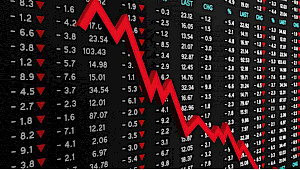Canadian pension funds must invest more in the domestic resource sector
February 16, 2024Originally published in The Globe and Mail on February 5, 2024 by Frank Giustra and Pierre Lassonde
The global race to secure critical minerals for our green future is on, and sadly, Canada is very much at risk of losing the plot.
In the past 20 years Canada has lost almost all of its mining giants, including Inco, Alcan, Falconbridge and Noranda, to multinationals – and along with them the head office and research and development talent pool. Inco, for example, was at one point the top battery technology expert in the world.
The solution lies in our Canadian pension funds – dubbed the Maple 8 – representing 35 per cent of all Canadian savings. Canadian investments do not just affect pension portfolios. They also have a considerable impact on Canada’s economy, generating jobs, improving incomes, and increasing contributions to retirement plans.
Given their long-term approach to investments, Canadian pension funds should look more deeply into Canada’s resource sector.
It is vitally important to bolster Canada’s resource sector. The International Energy Agency estimates that global investment in critical mineral mining will need to reach between US$360-billion and US$450-billion over the next decade in order to enable a net-zero energy transition by 2050. At this point the world is nowhere near those numbers.
A variety of critical minerals are required for energy systems such as batteries, solar, wind and nuclear. Lithium, nickel, cobalt, copper, uranium, graphite, and rare-earth elements are of particular importance as is low-carbon emission metallurgical coal for steel production. By some estimates, by 2040 we will need to mine four times the critical minerals we produce today.
Seemingly overnight, it’s as if the world awakened to the reality that securing these minerals has become a matter of national security. With the added challenges of deglobalization and the balkanization of supply chains, resource nationalism is rearing its ugly head, and battle lines are being drawn.
Recent developments highlight this issue: China has restricted graphite exports, Canada declared it would ban Chinese investment in critical minerals, and Indonesia is calling for an OPEC-style cartel of these important metals. And those are just a few examples.
While the rest of the world wasn’t paying much attention over the past two decades, China, always playing the long game, made significant inroads throughout the world. China has invested US$1.3-trillion over 20,000 projects in 165 middle- and low-income countries to secure its mineral and energy needs.
While Americans were late to wake up to this looming crisis, it appears they are now playing catch-up. Recently, The Wall Street Journal, citing people with knowledge of the talks, reported that the United States and Saudi Arabia are in talks to secure metals, namely in Africa. Given Saudi Arabia’s ability to negotiate government-to-government deals (the U.S. relies on the corporate world to do its bidding), this arrangement might go a long way in solving America’s dilemma in competing with China.
Notably absent from these dealings is Canada. Although it launched a Joint Action Plan with the U.S. to secure critical minerals, it has not dedicated specific funding for the development of projects as China and Saudi Arabia have.
The irony is that Canada is not only richly endowed with all the minerals needed for the energy transition but it’s also a global leader in mining expertise, hosting thousands of firms that provide technical, legal, financial, accounting and environmental services. Forty-three per cent of the world’s public mining companies trade on the TSX.
But today, we as a country are paying a heavy price for the losses of our mining firms. These senior companies were also a major source of funding for the intermediate and junior mining companies which have created much of the wealth of our country. To recall, our natural resource industry accounts for 15 per cent of Canada’s GDP.
The Canadian resource industry is an attractive investment proposition, yet it can’t get traction in Canada.
Meanwhile, the Maple 8 have just 25 per cent of their money invested in Canada. Most of it is in government bonds and some real estate. It is estimated that the eight pension funds have more invested in China (roughly $88-billion) than in Canadian public and private equities (roughly $81-billion).
Today, Canadian pension funds have less than 3 per cent of their total assets invested in Canadian public companies, down from 28 per cent in 2000. The Canada Pension Plan is estimated to have just 2 per cent of assets invested in Canadian public stocks, while Ontario Teachers’ Pension Plan is estimated at 0.1 per cent and BC Investment Management at 0.5 per cent. If we Canadians don’t believe and invest in Canada, who will?
If the pension funds invest more in the domestic resource sector, it would allow Canada to compete with Saudi Arabia, China and others. Junior resource companies are like seedlings for our future mineral needs. We need to nurture them. More importantly, Canada needs to stop being a wallflower, waiting for an invitation to the party. We must get ourselves onto the dance floor, and our very own pension funds should make for suitable dance partners.










